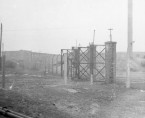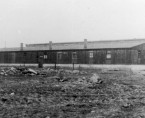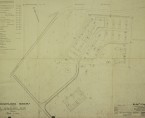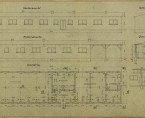Neu-Dachs
One of the largest sub-camps, located at the Dachsgrube coal mine on the outskirts of Jaworzno. It was set up in mid-June 1943 at the request of the management of Energieversorgung Oberschlesien AG, which was looking for manpower for the urgent renovation and expansion of its Dachs, Rudolf, Friedrich-August, Richard, and Leopold hard-coal mines.
After expansion, the sub-camp covered an area of about six hectares. Inside the electrified barbed-wire fence were 14 residential barracks, three latrines, a hospital, kitchen, clothing storage, boiler, laundry, and warehouse. The population of the camp grew steadily, reaching 2,800 in mid-October 1943 and 3,664 in January 1945. Selection took place regularly in Neu-Dachs, every week or two, and 40 to 80 prisoners were found unfit for labor each time and sent to Auschwitz. The largest selection claimed 250 victims in late January 1944.
The poor living conditions and the backbreaking labor in the coal mines prompted many prisoners to attempt to escape. The result was usually tragic—from the beginning of July to mid-October 1943, the SS shot 11 prisoners attempting to get out. In October 1944, several score of prisoners were accused of trying to tunnel out of one of the barracks. They were sent to Auschwitz I and imprisoned in block 11 for investigative purposes. Following the investgation, 19 prisoners were sentenced to death. They were taken back to Neu-Dachs and hanged in the roll-call square on December 6.
SS-Obersturmführer Bruno Pfütze was the commandant. There were 200 to 300 SS men in the garrison. In January 1945, prisoners from Neu-Dachs made one of the largest evacuation marches—about 250 km to Gross-Rosen in Lower Silesia. Many died along the way or were shot by the escorts. The Germans left about 400 sick and exhausted prisoners behind in Neu-Dachs. The Red Army liberated them.




